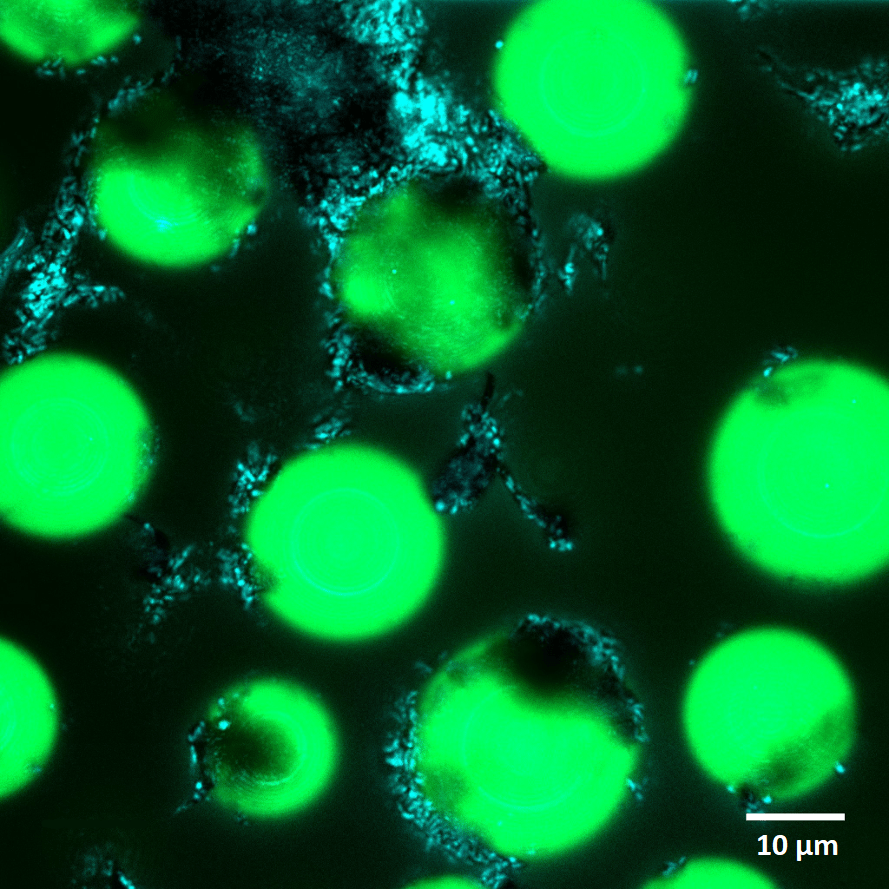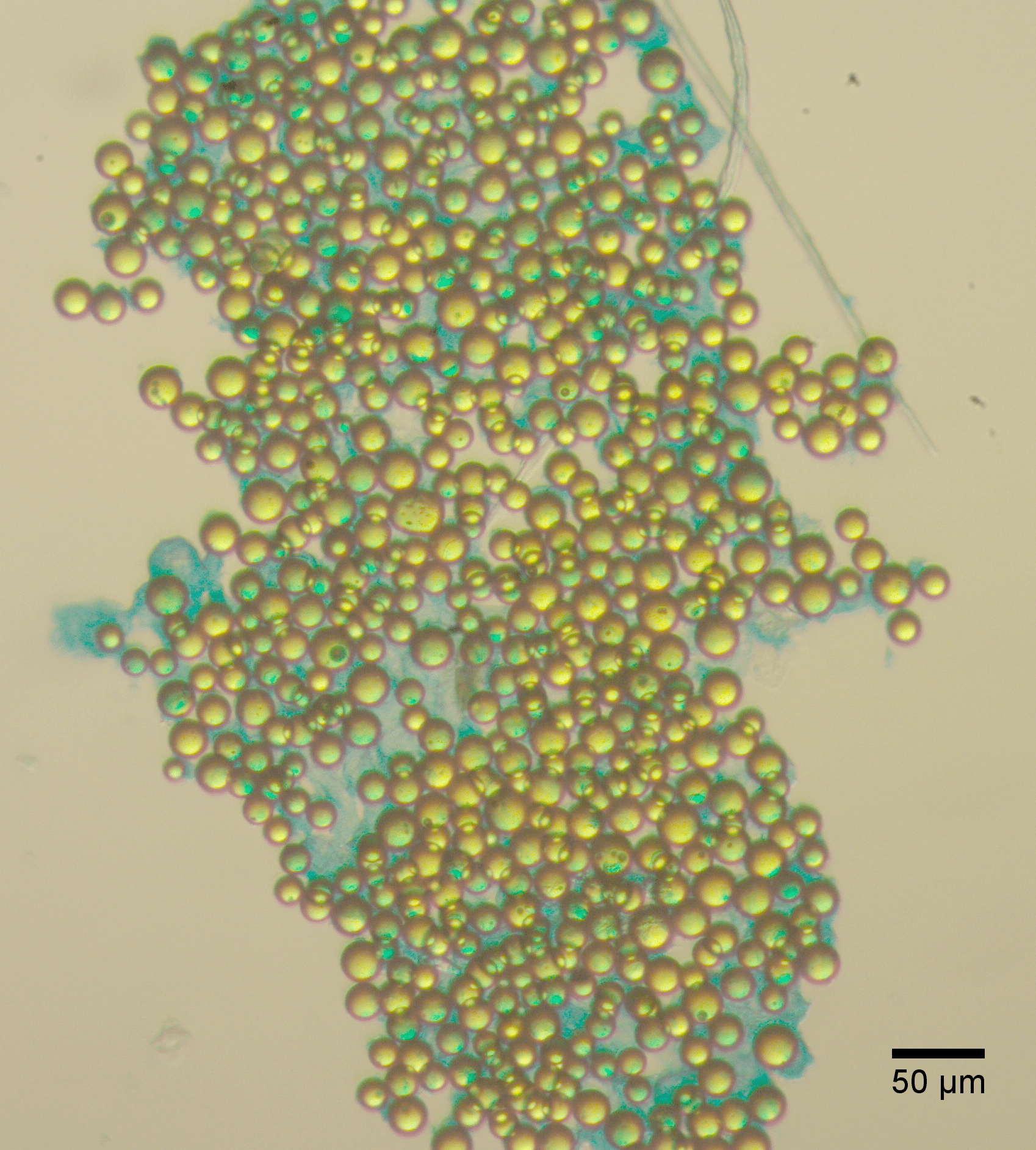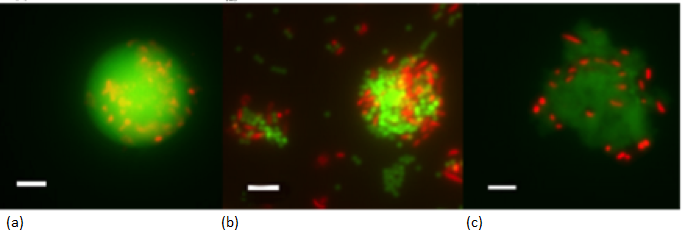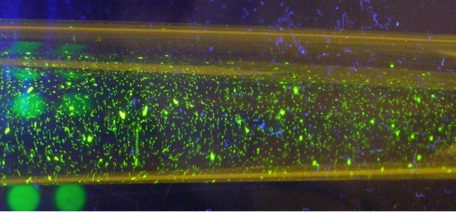Bacteria glues plastic together: possible threat to sea life? The RealRiskNano project
RealRiskNano is a £1.1 million project funded by the Natural Environment Research Council (NERC) led by researchers from Heriot-Watt University, in collaboration with Plymouth University. Its aim is to investigate and improve understanding of the behaviour and effects of micro- and nano-plastics in the marine environment. Micro-plastics are defined as measuring 1 μm to 5 mm, and nano-plastics are defined as being <1 μm. The project also explored the attachment of toxic chemicals (e.g. polycyclic aromatic hydrocarbons (PAHs)) to the plastic particles, and whether these chemicals might then accumulate and cause toxicological effects in the tissues of marine organisms that ingest them.
In this study, the formation of polystyrene nano- and micro-plastic agglomerates was examined, using methods for generating artificial marine snow (organic material that forms particulates in the upper layers of the ocean), similar to that of Shanks & Edmondson (1989), and utilising natural seawater collected from the northeast Atlantic (Figure 1).

Bacteria glues plastic together: possible threat to sea life?
Through RealRiskNano, the microbiology team at Heriot-Watt University, led by Dr. Tony Gutierrez, used natural waters, collected from the Faroe-Shetland Channel and Firth of Forth, to understand the behaviour of these tiny plastic particles in marine waters.
It was found that natural biopolymers, excreted by bacteria, can act as a “glue” in binding micro- and nano-plastics together so that they form polymer-plastic agglomerations in sea water (Summers, Henry & Gutierrez, 2018) (Figures 2a & b).
 (a)
|
 (b)
|
Figure 2: Microplastic agglomerates formed in natural seawater after a 7-day incubation were visualised with fluorescence and widefield light microscopy. The microplastic particles stained with Alcian Blue indicated the biopolymer is of glycoprotein composition.
The biopolymers are common across all freshwater lakes and marine environments, but until now it was unknown what effects these sticky, glue-like materials had on the ubiquitous micro- and nano-plastics. The Heriot-Watt team found that, within minutes, the plastic particles grouped together with bacteria, algae and the biopolymers that these microorganisms produce. Unexpectedly, the glue-like biopolymer substances were observed to form the bulk of these plastic agglomerations when viewed under the microscope.
Staining the agglomerates with acridine orange revealed that they contained a community of associated microorganisms (Figure 3).

Figure 3: Nano- and micro-plastic agglomerates (green spheres) stained with the nucleic acid-specific stain acridine orange (orange dots showing bacterial cells) and observed under a fluorescence microscope. Plastic particles are: (a) = 20 μm, (b) = 1 μm and (c) = 50 nm plastic spheres; Scale bars, 5 μm. Images are composites of images from filters FITC and Rhodamin (ex 440 nm, em 510 nm and ex 546 nm, em 580 nm, respectively). ex = excitation wavelength; em = emission wavelength.
What are the impacts and next steps?
This natural process of packaging micro- and nano-plastics into “gluey” particles, and that become larger with time, raises concern as they are likely to be seen as a food source by small marine animals. It is unknown what the effects of any ingestion might be. This calls for future work to understand what impacts these micro- and nano-plastic agglomerates could have to organisms, from small invertebrates (incl. filter feeders) to humans.
Further information RealRiskNano project
http://www.tony-gutierrez.com/portfolio-items/realrisknano-nanoplastics-...
https://epaquatic.org/realrisknano/
https://www.plymouth.ac.uk/research/marine-litter
Related media/press reports/related literature
Article featured by The Naked Scientist: “Microplastics bound up by bacteria”; Feb. 19, 2019: https://www.thenakedscientists.com/articles/science-news/microplastics-b...
Science interview podcast by The Naked Scientist for part of the show Periodic Table: 150 Au Years: “New wave of nanoplastics research”; Feb. 19, 2019; https://www.thenakedscientists.com/articles/interviews/new-wave-nanoplas...
Marine litter is the collective term for ‘any persistent manufactured or processed solid material discarded, disposed of or abandoned in the marine and coastal environments, including material lost at sea in bad weather’.
Marine litter is found everywhere in the world’s oceans, not only close to densely populated areas but also in remote areas far from obvious sources. The main land based sources are tourism, fly tipping, sewage, and waste disposal sites and the litter can be transported to the sea by rivers, drainage systems, sewage run-off or the wind. The main sea based sources are shipping, fishing and offshore oil and gas installations.
Significant quantities of marine litter appear in the seas and on beaches. Litter is unsightly and can cause harm to marine wildlife through entanglement and ingestion, smothering of the seabed and as a platform for invasive species. Plastics are the main type of litter found both on beaches and offshore, including increasing quantities of microplastic resulting from degradation of larger plastic products in the sea or the direct release of microplastics.
Marine litter was assessed by looking at microplastics in surface water, beach litter using the pilot Scottish Beach Litter Performance Indicators and sea-floor litter using data gathered by the International Bottom Trawl Surveys.

Links and resources
|
, 1989. Laboratory-made artificial marine snow: a biological model of the real thing. Marine Biology, 101(4), pp.463 - 470. Available at: https://link.springer.com/article/10.1007/BF00541648. |
|
, 2018. Agglomeration of nano- and microplastic particles in seawater by autochthonous and de novo-produced sources of exopolymeric substances. Marine Pollution Bulletin, 130, pp.258 - 267. Available at: http://www.sciencedirect.com/science/article/pii/S0025326X18302042. |

